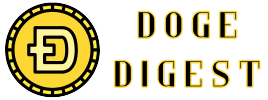In the rapidly evolving world of cryptocurrency, safeguarding your digital assets has become more crucial than ever. Dogecoin, once a lighthearted meme coin, has grown into a serious player in the crypto arena, attracting a diverse community of investors and enthusiasts. But with popularity comes risk-and the security of your Dogecoin wallet is paramount. Enter two-factor authentication (2FA), a simple yet powerful layer of defense that can transform how you protect your holdings. This article explores the significance of 2FA and how embracing it can fortify your Dogecoin wallet against emerging threats, offering peace of mind in a constantly shifting digital landscape.
Understanding the Importance of Two-Factor Authentication for Dogecoin Security
When it comes to safeguarding your Dogecoin assets, relying solely on a password is simply not enough. Cybercriminals have become increasingly sophisticated, exploiting weak or reused passwords to gain unauthorized access. By integrating two-factor authentication (2FA) into your security routine, you effectively add an extra layer of protection that requires users to present two separate forms of identification before access is granted. This drastically reduces the risk of theft, even if your password is compromised.
The beauty of two-factor authentication lies in its simplicity and effectiveness. Typically combining something you know (your password) with something you have (a smartphone app or hardware token), 2FA ensures that hackers cannot infiltrate your wallet without physically possessing your second factor. Here’s what 2FA usually involves:
- Authenticator apps: Generate time-based one-time codes on your phone.
- SMS verification: Receive a unique code via text message.
- Hardware tokens: Use a small physical device that generates authentication codes.
To put the benefits into perspective, consider the risk reduction values below, which illustrate how multiple barriers greatly enhance security. Even if one factor is breached, the likelihood of an attacker bypassing both is minimal, safeguarding your Dogecoin investments from unauthorized access.
| Security Method | Risk of Account Compromise |
|---|---|
| Password Only | High (1 in 10) |
| Password + SMS 2FA | Moderate (1 in 1000) |
| Password + Authenticator App | Low (1 in 10,000) |
| Password + Hardware Token | Very Low (1 in 100,000) |
Choosing the Right Two-Factor Authentication Methods for Your Wallet
When it comes to safeguarding your Dogecoin wallet, not all two-factor authentication (2FA) methods are created equal. Selecting the best option depends on a mix of security needs, convenience, and device compatibility. Common 2FA methods include authenticator apps, SMS codes, and hardware tokens, each offering different levels of protection and user experience.
Authenticator apps like Google Authenticator or Authy are widely recommended due to their strong security and ease of use. They generate time-sensitive codes that drastically reduce the risk of remote hacking. SMS-based 2FA, while more accessible to most users, is vulnerable to SIM swapping and interception, making it a less secure choice. Meanwhile, hardware tokens add a robust layer of physical security but require carrying an additional device, which might not suit every user’s lifestyle.
Here’s a quick comparison to help visualize your options:
| 2FA Method | Security Level | Convenience | Device Dependence |
|---|---|---|---|
| Authenticator Apps | High | Moderate | Smartphone |
| SMS Codes | Medium | High | Mobile Network |
| Hardware Tokens | Very High | Low | Physical Device |
Ultimately, combining methods-such as pairing an authenticator app with biometric wallet features-can amplify your wallet’s defenses. Prioritize the balance between usability and protection that fits your habits, ensuring your Dogecoin stays secure without becoming a hassle. Remember, the best 2FA method is the one you’re most likely to use consistently.
Step-by-Step Guide to Enabling Two-Factor Authentication on Popular Dogecoin Wallets
Securing your Dogecoin wallet with two-factor authentication (2FA) is a straightforward process that greatly enhances your account’s safety. Most popular wallets support this feature, often integrating it through authentication apps such as Google Authenticator or Authy. Begin by navigating to the security settings within your wallet app or web interface. Look for the 2FA option, which is frequently found under account settings or privacy & security, and select to enable it. You’ll usually be prompted to scan a QR code or enter a setup key into your authenticator app to link your wallet to your mobile device securely.
Once set up, the wallet will require you to input a unique 6-digit code generated by the authentication app every time you log in or perform sensitive actions like sending Dogecoin. This added step protects you from unauthorized access even if your password is compromised. Remember to safely store your backup recovery codes provided during the 2FA setup; these are crucial if you lose access to your mobile device. Regularly updating your 2FA settings and verifying your linked devices can minimize risks and maintain optimal security levels.
| Wallet | 2FA Method | Setup Location | Backup Options |
|---|---|---|---|
| Exodus | Authenticator App | Settings > Security | Recovery Phrase |
| Trust Wallet | SMS & Authenticator | Settings > Two-Factor Authentication | Backup Password |
| Atomic Wallet | Authenticator App | Settings > Security | Recovery Phrase |
| Coinomi | Authenticator App | Security Settings | Backup Keys |
By following these simple steps tailored for your Dogecoin wallet, you can leverage two-factor authentication to create a formidable barrier against hackers. Combining 2FA with strong, unique passwords and cautious interaction online builds an essential defense layer, securing your assets in the fast-paced world of cryptocurrency.
Best Practices for Managing Backup Codes and Recovery Options
When it comes to backup codes and recovery options, organization and security are paramount. Avoid storing backup codes digitally on your primary devices or cloud storage unless they are encrypted. Instead, consider physically writing them down and storing them in a secure location such as a safe or a locked drawer. This offline approach significantly reduces the risk of unauthorized access through hacking or phishing attacks.
It’s also wise to create multiple recovery pathways. For instance, pairing your two-factor authentication (2FA) with an authenticator app and a trusted phone number for SMS recovery provides flexibility. Just remember to keep all associated contact details up to date to avoid lockouts. You might also want to periodically test these recovery methods to ensure they function correctly when it counts most.
Below is a quick reference table to help you balance convenience and security while managing your recovery options:
| Backup Method | Security Level | Ease of Access | Recommended Use |
|---|---|---|---|
| Printed Backup Codes | High | Moderate | Safe offline storage |
| Encrypted Cloud Storage | Moderate | High | Accessibility with caution |
| Authenticator Apps | High | High | Main 2FA method |
| SMS Recovery | Low to Moderate | High | Backup for emergencies |
Staying Vigilant Against Phishing and Other Security Threats
In an era where cybercriminals constantly refine their tactics, recognizing the signs of phishing attempts is crucial. These deceptive schemes often masquerade as legitimate communications, trying to lure you into revealing sensitive information or clicking malicious links. Always scrutinize the sender’s email address, avoid clicking on unsolicited attachments, and verify requests for personal data through official channels before taking any action.
Implementing proactive habits is your best defense:
- Enable email filtering and spam detection systems;
- Regularly update your software and wallets to patch vulnerabilities;
- Use unique, complex passwords and avoid reusing them across services;
- Be cautious of urgent or emotionally charged messages prompting immediate action.
| Threat Type | Common Indicator | Preventive Measure |
|---|---|---|
| Phishing | Generic Greetings | Verify sender authenticity |
| Fake Wallet Apps | Unverified sources | Download from official stores |
| Malware | Unexpected downloads | Keep antivirus updated |
Q&A
Q&A: Securing Your Dogecoin Wallet – The Power of Two-Factor Authentication
Q1: Why is securing my Dogecoin wallet so important?
A1: Your Dogecoin wallet holds your digital assets, much like a physical wallet holds your cash. Without proper security, anyone could potentially access your coins and transfer them away. Given the irreversible nature of cryptocurrency transactions, protecting your wallet is crucial to avoid loss or theft.
Q2: What exactly is two-factor authentication (2FA)?
A2: Two-factor authentication is an additional layer of security that requires not only your password but also a second form of verification. Typically, this second factor is a temporary code generated on your smartphone or sent via SMS. This means even if someone knows your password, they still need that second code to access your wallet.
Q3: How does 2FA enhance the security of a Dogecoin wallet?
A3: By requiring two separate pieces of information to log in, 2FA drastically reduces the risk of unauthorized access. It turns your wallet security into a double-locked door rather than a single one, making it much tougher for hackers to break in.
Q4: Are there different types of 2FA I can use for my Dogecoin wallet?
A4: Yes! Common types include SMS-based codes, authenticator apps like Google Authenticator or Authy, and hardware tokens. Authenticator apps are generally considered more secure than SMS because they aren’t vulnerable to SIM-swapping attacks.
Q5: Can 2FA protect me against all types of cyber threats?
A5: While 2FA significantly boosts your wallet’s security, it isn’t a silver bullet. It can protect against password theft and unauthorized logins, but users should still practice good overall security-like using strong, unique passwords, avoiding phishing scams, and keeping their devices malware-free.
Q6: What steps should I take to enable 2FA on my Dogecoin wallet?
A6: Start by checking if your wallet provider supports 2FA. Most reputable platforms offer this feature in the security settings. You’ll typically scan a QR code with an authenticator app or register your phone number for SMS codes, then verify a code to activate it.
Q7: What happens if I lose access to my 2FA device?
A7: Losing your 2FA device can be tricky, but most wallet services provide backup codes or alternative recovery methods. It’s essential to safely store these backups when setting up 2FA, so you can regain access without losing your Dogecoin.
Q8: Is 2FA only for advanced users, or should all Dogecoin holders use it?
A8: Everyone who values their Dogecoin holdings should enable 2FA, regardless of experience level. It’s a straightforward step that offers immense peace of mind, shielding your investment from common digital threats.
In summary: Two-factor authentication acts as a steadfast guardian for your Dogecoin wallet, ensuring that your digital coins stay yours and yours alone. Embracing 2FA is a smart, practical move that strengthens your security in the ever-evolving cryptocurrency landscape.
Closing Remarks
In the ever-evolving landscape of digital assets, safeguarding your Dogecoin wallet is more than a smart choice-it’s a necessity. Two-factor authentication stands as a steadfast guardian, adding an extra layer of security that transforms your wallet from vulnerable to virtually impenetrable. By embracing this simple yet powerful tool, you’re not just protecting your coins; you’re investing in peace of mind. So take that crucial step today-because in the world of cryptocurrency, a little extra caution can go a long way.




